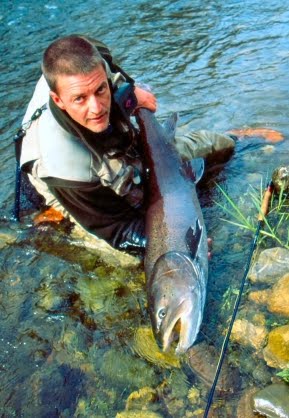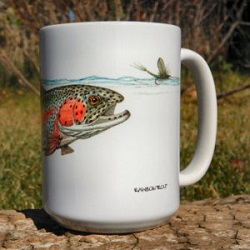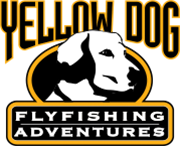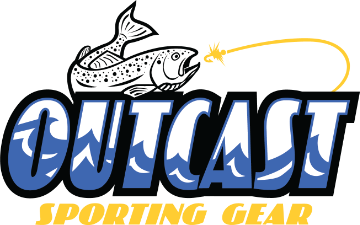“I apologize for the lack of photos but when competing there’s little time for pictures.”
 Day 1 of competition in the World Fly Fishing Masters Championships here in Asturias Spain began at 5:30 AM this morning over coffee then a breakfast. The Team USA starting lineup was Pete Erickson, Scott Robertson, Mike Sexton and myself. Sam Mavrakis started off as our alternate and Jerry Arnold never fishes. Jerry strictly manages the team.
Day 1 of competition in the World Fly Fishing Masters Championships here in Asturias Spain began at 5:30 AM this morning over coffee then a breakfast. The Team USA starting lineup was Pete Erickson, Scott Robertson, Mike Sexton and myself. Sam Mavrakis started off as our alternate and Jerry Arnold never fishes. Jerry strictly manages the team.
 It was a cold, wet, rainy and dark morning. At 7:15 I boarded my bus. I was early but a few other contestants I’m directly competing against were already on there. We rolled off to Piloña River where I’d soon get my randomly drawn beat on Section 3.
It was a cold, wet, rainy and dark morning. At 7:15 I boarded my bus. I was early but a few other contestants I’m directly competing against were already on there. We rolled off to Piloña River where I’d soon get my randomly drawn beat on Section 3.
The way the scoring works in the Worlds is this: Each team has four members. Competition consists of four three hour sessions – this year they are all on the Piloña River. Each team member is assigned a letter – A, B, C or D. I’m D and today I competed in two sessions against all other “D” folks from other teams. Meanwhile my three team members fished against their matching letters from other teams.
In order to score a fish he must be 20 cm long. It’s best to catch lots of fish rather than a couple big ones. There are nine teams so scores after each session range from 1-9. One being the best you can score and nine the worst. The idea is to have the fewest points at the end. So, if you win your session amongst your group you score a 1. If you’re second you score a 2 and third scores a 3 and so on. If you’re the big looser you score a horrible 9! Or if you don’t catch a single fish, even if half your group doesn’t catch a single fish, you and they score a 9. The bottom line is you absolutely must not blank in a session because if you score a 9 its hurts the team terribly.
The team with the least amount of points in the end wins and the angler with the least amount of points wins the individual. This is an Olympic style event so winners receive medals with grand champs receiving gold. It’s an incredibly challenging yet fun event. And I can tell you, I competed against many of these Europeans back in the day and some are the best anglers in the world.

After a 45 minute ride we pulled into the parking lot of the La Roca Restaurant. There, nine controllers (judges) climbed aboard and we continued driving to the river. Along the way one of the organizers read off the random beat numbers. I received Beat 8 and my friendly yet non-English speaking controllers name was Jose.
 The rain turned to drizzle by the time the bus dropped me and Jose off. I snagged my gear and Jose led me to Beat 8. It was a huge beat of at least 300 yards completely covered in a canopy of dripping wet leaning trees. Tight quarter casting would be essential. I pulled out my 4-weight Winston Air already rigged for dry dropper. The dangling nymph at the point was a custom pattern given to me by Scott last night and my dropper was a size 14 Elk Hair Caddis. I pulled out my second rod, my 4-weight LS, and rigged this with one size 18 CDC PMD in case I saw a rise. I even put together my 5 with two heavy nymphs in case I had deep pool.
The rain turned to drizzle by the time the bus dropped me and Jose off. I snagged my gear and Jose led me to Beat 8. It was a huge beat of at least 300 yards completely covered in a canopy of dripping wet leaning trees. Tight quarter casting would be essential. I pulled out my 4-weight Winston Air already rigged for dry dropper. The dangling nymph at the point was a custom pattern given to me by Scott last night and my dropper was a size 14 Elk Hair Caddis. I pulled out my second rod, my 4-weight LS, and rigged this with one size 18 CDC PMD in case I saw a rise. I even put together my 5 with two heavy nymphs in case I had deep pool.
 I had 15 minutes to kill upon arrival. I examined my stretch. It’s essential to plan of how to efficiently fish it in three hours. Most my water was fast but I had one short section of flat water. If a hatch started surely I’d find a riser. My strategy was to stay away from this place until at least 11 or until a hatch started.
I had 15 minutes to kill upon arrival. I examined my stretch. It’s essential to plan of how to efficiently fish it in three hours. Most my water was fast but I had one short section of flat water. If a hatch started surely I’d find a riser. My strategy was to stay away from this place until at least 11 or until a hatch started.
Jose yelled go at 9 am. I pounded away with short casts with the dry dropper rig. I worked upstream dropping the rig over every good looking place. Wading was difficult with slippery rocks and lots of stepping up and over logs and more rocks. I was in the zone however and hardly noticed the obstacles. But before I knew it I came to my flat water. I hadn’t seen a fish and I was shocked to see an hour went by!
As planned I put the brakes on at my flat water. No fish were rising so I walked around in order not to spook a fish and then proceeded my dry dropper technique in the fast water above. I covered this section until 11 and still, not a single fish.
It wasn’t time to panic but it was time to hit my dry fly water even if it meant covering it blind. I ran to the bottom of the slick water and traded my dry dropper rig for my straight dry fly rod.
 I had a long 15 foot for 5X leader. As I eased out to begin blind fishing I saw a rise. Knowing I absolutely had to catch this fish I dropped to my knees. Then I crawled to position. I cast upstream at a slight angle. Nothing on the first three but on my fourth the fish ate. I made three huge strips and swung out my net. First fish! No blank!
I had a long 15 foot for 5X leader. As I eased out to begin blind fishing I saw a rise. Knowing I absolutely had to catch this fish I dropped to my knees. Then I crawled to position. I cast upstream at a slight angle. Nothing on the first three but on my fourth the fish ate. I made three huge strips and swung out my net. First fish! No blank!
The fish was far from remarkable but the short 23 cm brown counted. Now was time for another so I crawled back out to the exact same place. I had 35 minutes left till finish. I waited for another rise.
 5 minutes went by then 10. It was time to start casting blind when another small trout rose. I took a deep breath. All I needed was a good cast. This one ate my fly on the first cast. He was a whopping 22 cm but fish number two!
5 minutes went by then 10. It was time to start casting blind when another small trout rose. I took a deep breath. All I needed was a good cast. This one ate my fly on the first cast. He was a whopping 22 cm but fish number two!
I had 15 minutes more. I waited about two minutes for another rise but when it didn’t occur I finally started to fish blind. Over the next 13 minutes I covered every inch that I could but no more. My three hour session ended. I wondered would two fish be good or bad?
 It turns out that five of the nine anglers in my group blanked and I ended up with a 4. Not great but when you look at the blanks it’s not bad either. I’d soon learn that Mike also did well scoring a 3. But there was bad news also. Both Pete and Scott blanked.
It turns out that five of the nine anglers in my group blanked and I ended up with a 4. Not great but when you look at the blanks it’s not bad either. I’d soon learn that Mike also did well scoring a 3. But there was bad news also. Both Pete and Scott blanked.
 After the first round Team USA was at the bottom of the pack sitting in 7th place. But most teams had at least one blank and with three more sessions, we agreed there was time to get back on track. We grabbed a seat at the La Roca Restaurant and enjoyed a delicious paella.
After the first round Team USA was at the bottom of the pack sitting in 7th place. But most teams had at least one blank and with three more sessions, we agreed there was time to get back on track. We grabbed a seat at the La Roca Restaurant and enjoyed a delicious paella.
 My afternoon fishing took place on Sector 4, the lowest section of the Piloña River. The majority of the morning’s blanks came from Sector 4. It’s where Pete got his blank. No doubt I was tense on the bus ride there. I drew Beat 3. Before long I was following a new controller through the thick undergrowth to the river.
My afternoon fishing took place on Sector 4, the lowest section of the Piloña River. The majority of the morning’s blanks came from Sector 4. It’s where Pete got his blank. No doubt I was tense on the bus ride there. I drew Beat 3. Before long I was following a new controller through the thick undergrowth to the river.
 Like in the morning my controller was very nice. It’s a shame for the language barrier. Most the controllers are anglers from the area. I want to talk to them and they want to talk to me. We communicate some but it would be cool to have a full on conversation.
Like in the morning my controller was very nice. It’s a shame for the language barrier. Most the controllers are anglers from the area. I want to talk to them and they want to talk to me. We communicate some but it would be cool to have a full on conversation.
The Piloña was big down here. Beat 3 was wide with a long slow area more like a lake than a river. Above it were a 100 yards of rapids. It was drizzling again and though it was only 4 pm it seemed as though it was the last hour of the day.
 I saw a fish rise several times before 4 (start time). When the bell rang I grabbed my CDC PMD and went on the pursuit. I moved cautiously and stayed low. When my fly landed where I saw the rise I got a big surprise. A fish of more than 20” (over 50 cm) lifted from the bottom and followed my fly. My heart jumped a few beats and I poised to strike. Then the fish bailed and it turns out it was some species of mullet not a trout! My beat ended up having a heap of mullet scattered all around. Last time I had a fresh water mullet nearly eat my fly was on the Gourits in South Africa. I still need the species for my list!
I saw a fish rise several times before 4 (start time). When the bell rang I grabbed my CDC PMD and went on the pursuit. I moved cautiously and stayed low. When my fly landed where I saw the rise I got a big surprise. A fish of more than 20” (over 50 cm) lifted from the bottom and followed my fly. My heart jumped a few beats and I poised to strike. Then the fish bailed and it turns out it was some species of mullet not a trout! My beat ended up having a heap of mullet scattered all around. Last time I had a fresh water mullet nearly eat my fly was on the Gourits in South Africa. I still need the species for my list!
 The mullet got the blood flowing and I fished that CDC for a solid hour prowling my slow water pool. There were random rises and I caught a few trout. But each disappointed by being slightly undersized.
The mullet got the blood flowing and I fished that CDC for a solid hour prowling my slow water pool. There were random rises and I caught a few trout. But each disappointed by being slightly undersized.
After an hour and a half went by and I hadn’t scored a fish I got that lump in my throat warning me that a blank was threatening. It was time to leave my comfort zone of dry fly fishing and nymph fish my fast water. I had to catch a measurable fish!
The rain became hard during my last hour of competition time. Rather than waste time retrieving my rain jacket I pulled up the hood on my Simms fleece. The rain would soak through but not likely before the end. My dry dropper groove was taking over and in the middle of the river was a submerged bush. The structure had brown trout written all over it and I approached as if it were a guaranteed fish. It was. On my first cast my Elk Caddis dropper plummeted and I set. 25 cm! NO BLANK!
It’s funny how competition fishing works. I went from stressed with fear of a blank to a fish. Then on my next cast after in the same place I got another. 23 cm! Heck yea!
I felt as though I was going to catch ten after the second trout but I didn’t. I fished every nook and cranny of the rest of my fast water with my dry dropper but never saw another fish. Again, funny how it works – three hour session and only saw two measurable trout and they came in two casts. I’ll take it though.
 The rain soaked through my jacket by the time 7 pm arrived and the session ended. I was wet and cold. But I was happy I didn’t blank. I went on to score a satisfying 2. There were three blanks and four guys that caught one fish. The only competitor to beat me was my Italian friend, Valerio Santi Amantini. Valerio landed three fish.
The rain soaked through my jacket by the time 7 pm arrived and the session ended. I was wet and cold. But I was happy I didn’t blank. I went on to score a satisfying 2. There were three blanks and four guys that caught one fish. The only competitor to beat me was my Italian friend, Valerio Santi Amantini. Valerio landed three fish.
The rest of Team USA also did well. No one blanked. Mike scored a 3. Scott 6. And Pete got a 4. Team USA was 2nd of Session 2 and it moved us from 7th to 5th place overall. But we are very close to 4th and 3rd held by the Irish and the French.
We get a day off tomorrow. It’s the Masters you know and old guys need a rest after two sessions – ha! No doubt we’ll all take it and enjoy. For now its dinner and some rest. Tomorrow it will be prepare for the final two sessions so we can move into medal contention! Stay tuned. . . .














0 Comments